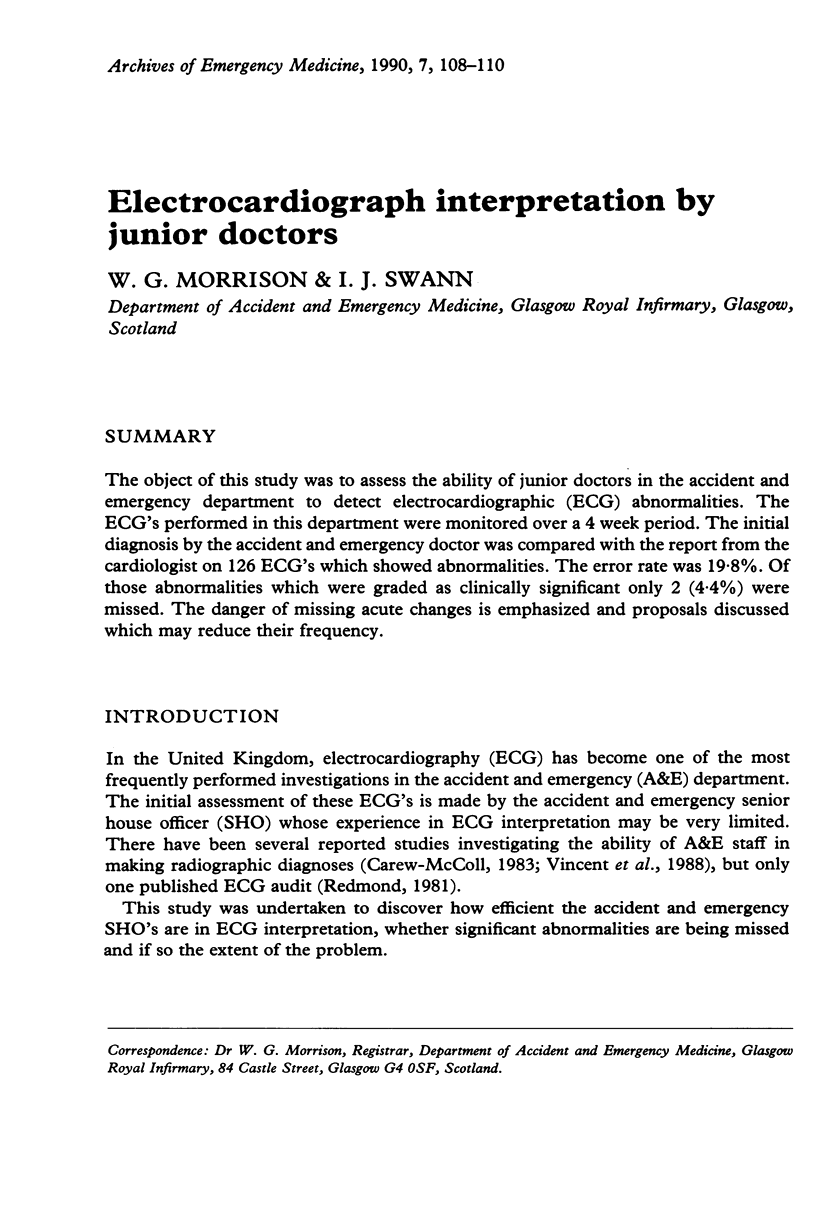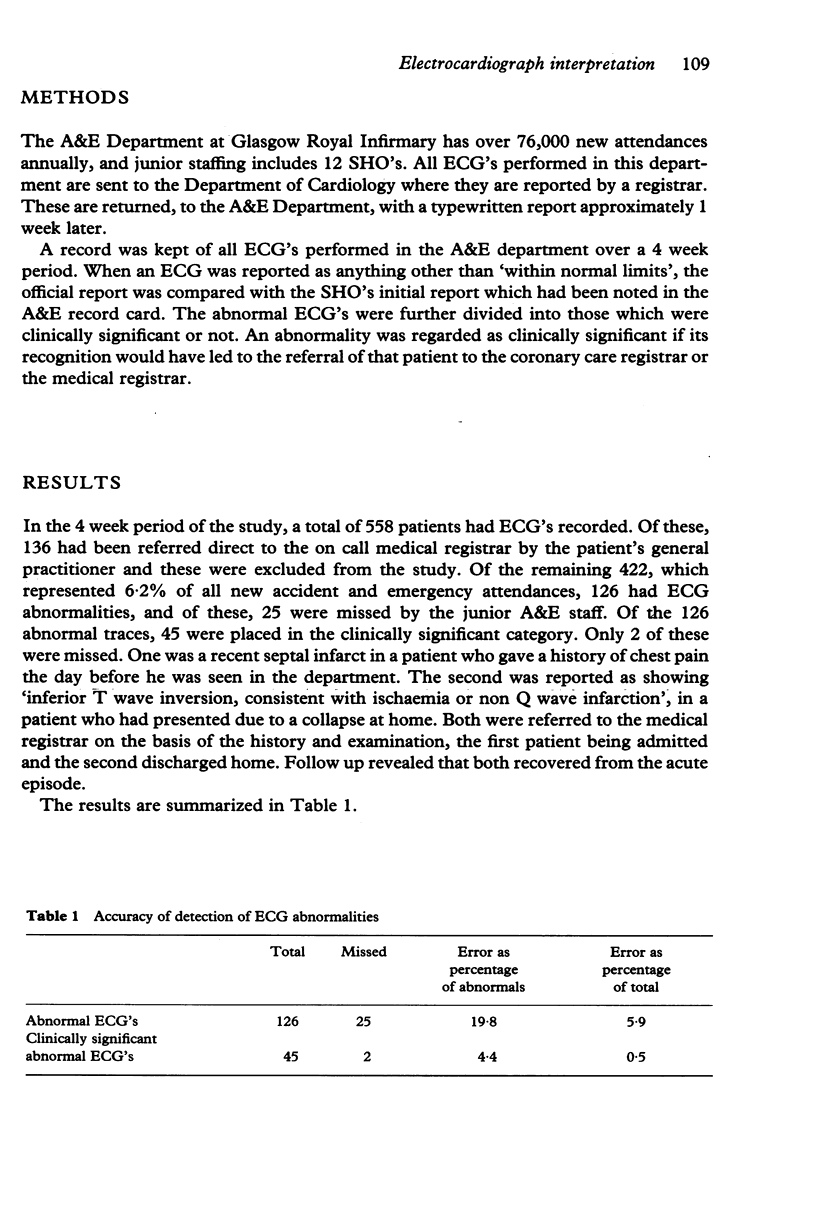Abstract
The object of this study was to assess the ability of junior doctors in the accident and emergency department to detect electrocardiographic (ECG) abnormalities. The ECG's performed in this department were monitored over a 4 week period. The initial diagnosis by the accident and emergency doctor was compared with the report from the cardiologist on 126 ECG's which showed abnormalities. The error rate was 19.8%. Of those abnormalities which were graded as clinically significant only 2 (4.4%) were missed. The danger of missing acute changes is emphasized and proposals discussed which may reduce their frequency.
Full text
PDF


Selected References
These references are in PubMed. This may not be the complete list of references from this article.
- Carew-McColl M. Radiological interpretation in an accident and emergency department. Br J Clin Pract. 1983 Nov-Dec;37(11-12):375–377. [PubMed] [Google Scholar]
- Vincent C. A., Driscoll P. A., Audley R. J., Grant D. S. Accuracy of detection of radiographic abnormalities by junior doctors. Arch Emerg Med. 1988 Jun;5(2):101–109. doi: 10.1136/emj.5.2.101. [DOI] [PMC free article] [PubMed] [Google Scholar]


